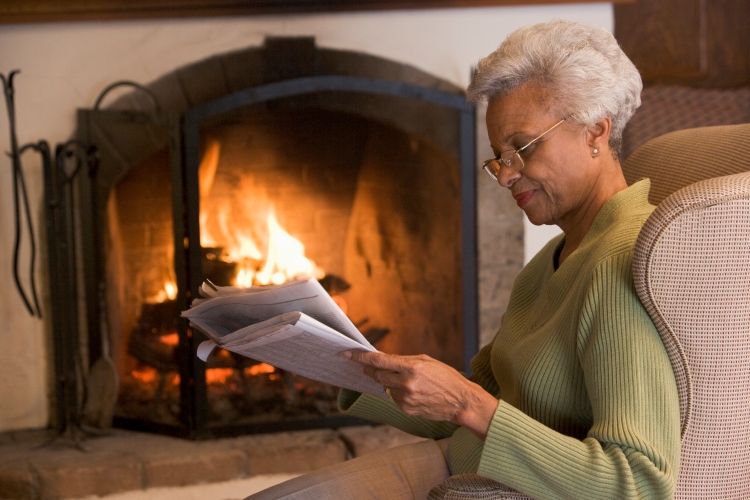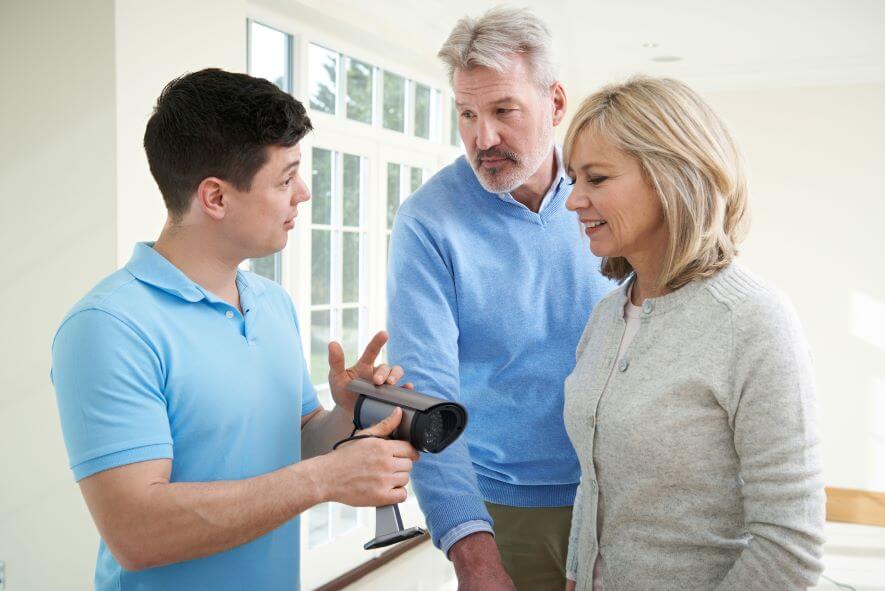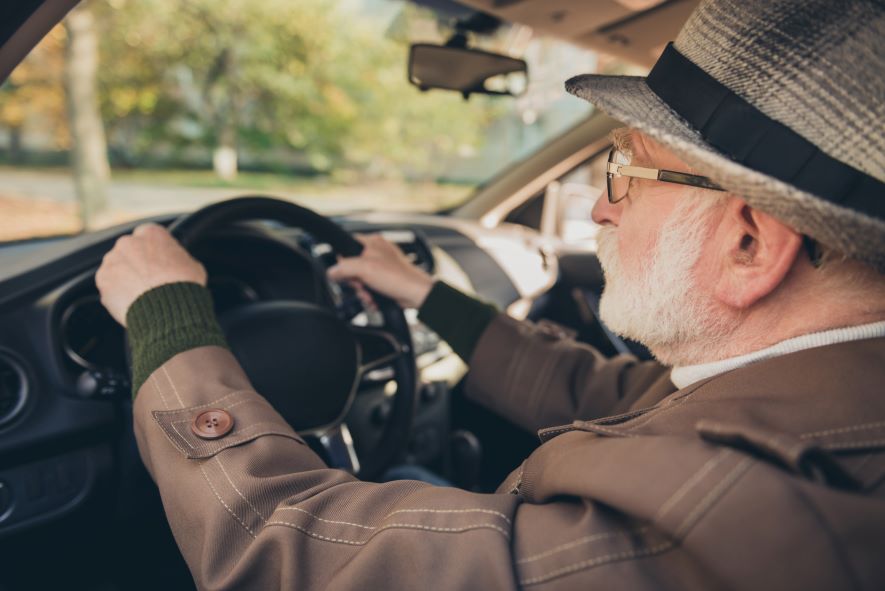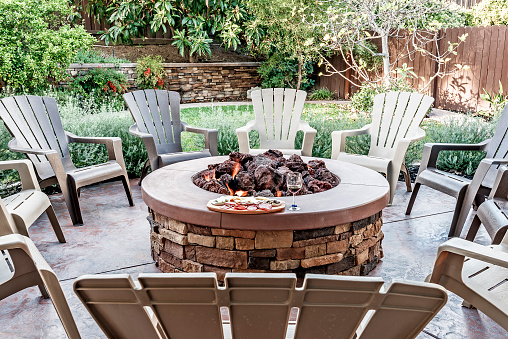As the weather turns cooler and days get shorter, you may be taking steps to stay warm and cozy this winter — from stocking up on firewood to pulling the electric blanket out of the closet.
Staying warm doesn’t have to be daunting, but it’s important to keep safety top of mind as you crank up the heat. Heating is the second most common cause of home fires and home fire injuries, according to the National Fire Protection Association (NFPA). In fact, heating causes over 44,000 U.S. home fires every year. These blazes injure over 1,350 people a year and cause over $1 billion in property damage.
But taking the time to learn a few tips for safe home heating and scheduling a few easy heating action items can keep you warm and safe. And by being savvy about energy use, you may even be able to save money — without sacrificing comfort. (No, we won’t tell you to put on a thicker sweater and sit there with your teeth chattering).
Want to learn how to heat your home safely and efficiently this winter? Here are five steps for safe home heating, with action items for each.
Five Tips for Safe Home Heating
Do you fire up a fireplace, wrap up in an electric blanket or keep space heaters in every room? Or all of the above? To stay safe, use these simple tips to get ready for winter, no matter what type of home heat source you use.
1. Make Sure Your Furnace Is in Good Working Order
To keep carbon monoxide (CO) gas from leaking into your home, make sure your furnace is exhausting properly, says Danny Lipford, home improvement expert and host of the Today’s Homeowner television and radio shows. CO gas can be fatal and, because it’s odorless, homeowners may not even know they have a problem until it’s too late.
Safe Home Heating Action Items for Your Furnace:
- Get your furnace serviced by a professional: Schedule a furnace cleaning and inspection with a knowledgeable technician who can make sure your system is running as safely and efficiently as it should. The pro should follow a furnace inspection checklist to make sure your furnace is in good working order. Items on the list include looking for leaks and blockages, examining electrical connections and checking the system’s air filter.
- Make sure the inspector checks for leaks: Ask the tech to inspect the vent pipe — both where it’s connected to the furnace and where it protrudes through your roof. If any of the deadly gas has built up in your home, the tech should release the gas. For that, they’ll need access to your attic.
Homeowners can “bump something loose” when moving stored items in or out of the attic and roofers can inadvertently damage furnace exhaust vents, Lipford says. The moral? A CO leak can come from areas of the home many homeowners wouldn’t even know to consider.
2. Make Fireplace Safety a Priority
When temperatures drop, it’s nice to cozy up to the fire with a warm beverage in hand. But it’s important to do so safely — whether your fireplace burns wood or gas. Regular safety inspections and cleaning are key for both types of fireplaces.
Rust buildup and cracks can lead to carbon monoxide and smoke leaks in gas units. And in their wood-burning cousins, creosote buildup can combust. Either scenario could cause a chimney fire.
A chimney fire can be scary and dangerous. “It sounds like a freight train in your house,” says Mark Scott, owner of Mark IV Builders in Cabin John, Maryland. If you’ve ever been in that situation, he adds, “you’ll pay a lot more attention after that.”
Safe Home Heating Action Items for Your Fireplace:
- Get your fireplace cleaned and inspected: Before you snuggle in by the dancing flames, make sure your fireplace has been cleaned and inspected, suggests Lipford. “Most people don’t realize their gas unit needs just as much cleaning and inspecting as does a wood-burning stove,” he adds.
- Know your wood: If your fireplace burns wood, it’s important to know what kind to use. If you cut your own wood, choose oak and avoid pine. Let it sit for at least a year before burning to avoid heavy smoke. And don’t throw that old wood from your deck project into the fire as it’s probably been pressure — or creosote — treated. “It’s tempting to use scrap wood, but if you do, you’re burning chemicals within the confines of your home,” says Lipford.
- Get a fuel-friendly fireplace: Is it time to swap out your old fireplace for a new one? Making a good choice can save you money. There are more efficient models— wood, gas and pellet — that use a motor to circulate air behind the firebox and then blow it back out into the room. Check the efficiency rating on your fireplace to get a gauge on whether you’re losing energy.
While a fireplace is great for ambiance, it’s often not the most efficient heating source for your home. Your chimney pulls “so much heat out of your home by exhausting the hot air you’re gaining by using the fireplace,” Lipford says.
3. Be Careful With Portable Heaters
“A portable space heater can potentially save you some energy, even though space heaters are pretty notorious for using a fair amount of electricity,” Lipford says.
If you live in a large space and you’re home alone, or if your family is gathered together in one room, a space heater can give you the freedom to turn down the heat in the rest of the house. It can also be ideal for drafty rooms that don’t heat as evenly as the rest of the house. But an improperly used portable heater can be unsafe.
Safe Home Heating Action Items for Portable Heaters:
- Use only safer space heaters: Make sure all the portable heaters in your home have been tested and certified by an independent laboratory like UL (Underwriters Laboratory), ETL (Intertek) or CSA (Canadian Standards Association). Also, be sure your heaters have an automatic shut-off option that will kick in if the heater is knocked over or hits a higher-than-normal temperature.
- Take steps to avoid heater fires: First, keep a three- to four-foot radius around the heater. Make sure there’s no combustible material, like curtains, blankets or furniture, nearby. Always turn the unit off when you leave the room, whether or not you have pets or young children in the home. Accidents can happen, even if the unit isn’t bumped. Finally, don’t use an extension cord. Instead, plug the cord directly into the wall outlet.
Pro tip: Avoid kerosene heaters altogether. Most units require that you leave a door or window cracked when in use which will, obviously, bring cold air into the area you’re trying to heat. “To me, that makes no sense,” says Lipford. Homebuilder Scott agrees and even takes his advice one step further — “I never advocate using kerosene heaters in the house,” he says. “It’s just tempting fate.”
4. Snuggle Up Under an Electric Blanket
Covering up with an electric blanket at night can save you a lot of money when you also turn down the thermostat, Lipford says. He suggests you set a programmable thermostat to automatically lower your home’s temperature to 65 degrees at bedtime and raise it to your preferred daytime temperature just prior to your normal waking hour. You may be able to save 10 to 15 percent on your energy bill every year just by turning the heat down by 10 to 15 degrees for eight hours a day, according to the U.S. Department of Energy. It certainly makes sense to do that at night while you’re curled up under a warm blanket.
Safe Home Heating Action Items for Your Electric Blanket:
- Replace old and worn electric blankets: Newer electric blankets have a shut-off mechanism to keep them from overheating or catching fire. If you bought a blanket before 2001, it’s time for an upgrade. Also, “inspect your electric blanket periodically to make sure the wires are intact,” Scott says.
- Store electric blankets properly: To prolong the blanket’s lifespan, keep it completely flat when in use, Lipford suggested, and then carefully folded when stored. If you have pets, cover it with another blanket so your cat or dog won’t be able to get to it and claw or chew through any of the wires.
If you use an electric blanket properly, you can stay toasty while saving energy. The amount of energy your blanket uses is just a small fraction of what your furnace would use to run at full temperature throughout the night.
5. Use Monitors to Keep Your Home’s Air Safe
No matter what kind of home heat you’re using, you can increase your family’s safety by maintaining the right mix of smoke alarms and carbon monoxide detectors throughout the house.
Safe Home Heating Action Items for Air and Fire Safety:
- Take one simple step to keep your home safe: Place carbon monoxide detectors and smoke detectors outside every bedroom, on each level of your home and in your garage. “They’re cheap, they’re easy to install and they can certainly do a lot to make your home safer for your family,” Lipford says.
- Set a reminder to perform basic maintenance: Put an alert on your phone or a note on your calendar to remind you to check the batteries and test your detectors at least a few times per year. The units can’t warn you of danger unless they’re in proper working order.
As the chill sets in, make a plan to complete these action items to keep your home nice and warm, safely. A little safe home heating precaution can prevent many potential problems during the cold days of winter.
Are you excited about cooler temperatures? How do you keep your home feeling cozy, warm and safe as winter approaches? Let us know in the comments.







I turn the heater on for an hour before the higher rates take effect (which is usually @5pm). I close the bathroom and bedroom doors to keep the heat in the rooms. By the time I go to bed my bedroom is warm and cozy. I put up a black -out curtain between my leaving room and kitchen. When the heater is on the kitchen gets warm quickly. The living room is the only cold room in the house. I am still working on finding out why that is happening. When I place my hand in front of the heater vent in the living room you can feel the heat but it doesn’t stay in the living room. Insulation has been done, but there may be more useful ideas to help with keeping the living room warm.
Thanks for the tips. I have an electric throw in the living room. I will turn the heat down.
YES!! THANK YOU AND I HOPE EVERYONE HAS A SAFE AND WARM WINTER.
Thank you good tips
You’re welcome!
This was very good information. We are (if not) in line with all the information. Never hurts to review important points of safety. Thank You
You’re welcome, William! We’re glad you liked the article.
Thanks real helpful information, I thought the fire department used to give seniors, cd monitors. Do they still? I could use a new one.
Thank you for the tips. It seems like every time we have a technician come out to check our furnace or air conditioner all they want to do is sell us a new unit. Our units are not that old, and we have maintenance done every year, but they try to talk us into a new one for only $13,000. So, I am afraid to have anyone check my systems.
Thanks! Great advice.
You’re welcome, Stan!
My entire house is electrical! There is a thermostat in each room. I do not heat up the basement or other rooms that are not in use by me during the colder months here in New England. Should I attempt to keep the entire up stairs at 65 degrees or just the rooms that I am utilizing the most and others without heat. Thank You.
Thanks for info & important to have furnace checked by professional every year. I have known of a few cases over the years where people were experiencing headaches when at home & it turned out that gas furnace was putting out some carbon monoxide, which was the cause.
Very good information. Thank you
You’re welcome, Harold!
Thank you…very informative. Have a safe and toasty warm winter. 😊
Very good and complete information. Thank you.
What is the optimum setting for the indoor thermostat during the winter hours and again during the summer hours?
Thank you this is great information to have!
You’re welcome, Martina! We’re glad you found it useful.
Thank you. All hints were very enlightening and helpful.
You’re welcome, Theresa!
I am most captivated when you wrote that you should schedule a furnace cleaning and inspection with a knowledgeable technician who can make sure your system is running as safely and efficiently as it should. We want to ensure that our heating system is prepared for winter storms. I better hire an HVAC contractor near our place to tune up our heating system.
The last time I was looking at electric blankets at the store, they weren’t called “electric blankets”. They were called “warming blankets” for some strange reason. In my opinion, ALL blankets should warm you. (I know all of mine do.)
Thank you for all the good tips. However,
I have no fireplace, no space heater and no electric blanket.
Thanks
What tips do you have for those of those who don’t have a furnace, but heat our homes with a heat pump?
Thanks for the tips on heaters and the reminder about electric blankets. I feel berated by the first comment about bundling but you do not offer Renter’s insurance so I can’t bundle and keep Hartford! Hmm?
Ellen – Glad you found the tips useful. We offer Renters Insurance in most areas. If you haven’t yet, you can get a renters insurance quote online or call 888-413-8970 and speak with one of our specialists.
Renters Insurance is offered by The Hartford, I bundled it w/my auto policy and saved 🙂. I found, the best time of year to replace my electric (warming blanket) is end of season CLEARANCE SALE, they are marked down very low.
Thank you for these important tips of safety.
Thanks
We have a regular house maintenance equipment company who check for plumbing, heating, air conditioning and full electrical. So we have had out heater already checked. So we are ready to switch over from our air conditioner to our heater with ease this year. We also had a different company come out and clean out our duct work and dryer vent. We have a company that comes to serves our smoke and carbon alarms bi- annual. Switched our thermostats to the nest program this year which is hooked up with APS savings program. This works great with our solar for bills to be 1/3 of years before at the same time.
Good article, a good reminder for what I have practiced over the years. Yet easily overlooked.
I share your ideas on safety and prevention when it comes to heating and fires.
This article come in spanish??
Ruben – Thanks for reading Extra Mile. Here’s so info on how to change your browser to see a webpage in Spanish.
I must point out that you’re not too concerned with climate change, are you?
Pamela – Thanks for reading. Extreme weather caused by climate change significantly impacts people’s lives and businesses. As a 211-year-old insurer and asset manager, we view the transition to a greener society as a business imperative – and we are doing our part to drive sustainable change. We are committed to ensuring a sustainable future while creating value for our customers. An important feature of this commitment is regular, transparent and best practice-aligned disclosure of our corporate sustainability actions and progress. To learn more and read our sustainability report, please visit our website.
I never took into account that heating our home can be so dangerous until you mentioned and provided situations where it can happen. We just simply use our heater for the past few years without necessary precautions and this would probably be the perfect time to stop this practice. I’ll try to have it checked by professionals for any repair issues first before using it this year.
Now that the colder nights are rolling around, my brother has thought of using the fireplace he had installed at his beach house but never used. It really helped when you stated that cracks and rust that may form over time in a fireplace can be a serious risk because ever since we put up the beach house we have never used the fireplace even once since we only stayed over during the summer so we’re unsure whether or not it’s in perfect condition to operate. We’ll be sure to take extra precautions and get a furnace fireplace service company to do an inspection on it before using it. Thank you!
I love that you point out that having a knowledgable person come to inspect and service the furnace is a great way to help protect your home from potential damage. About a week ago, I was talking to my sister, who just purchased a new home. She mentioned that there is a weird smell when the heater turns on. I wonder if she needs her heater serviced. I will have to help her look for services in the area to help.
Thanks for this advice for heating a home. It’s good to know that you should try to get a furnace cleaned annually. I’m kind of interested if it could be beneficial to have a furnace cleaned twice a year if it’s an older one.
So with the furnace in my home, I honestly don’t know when the last time it got serviced. Now as you said, it would be a good idea to schedule a check-up for it once a year. I don’t think that there are any problems with it, but it wouldn’t be a bad idea to have it looked at for good measure.